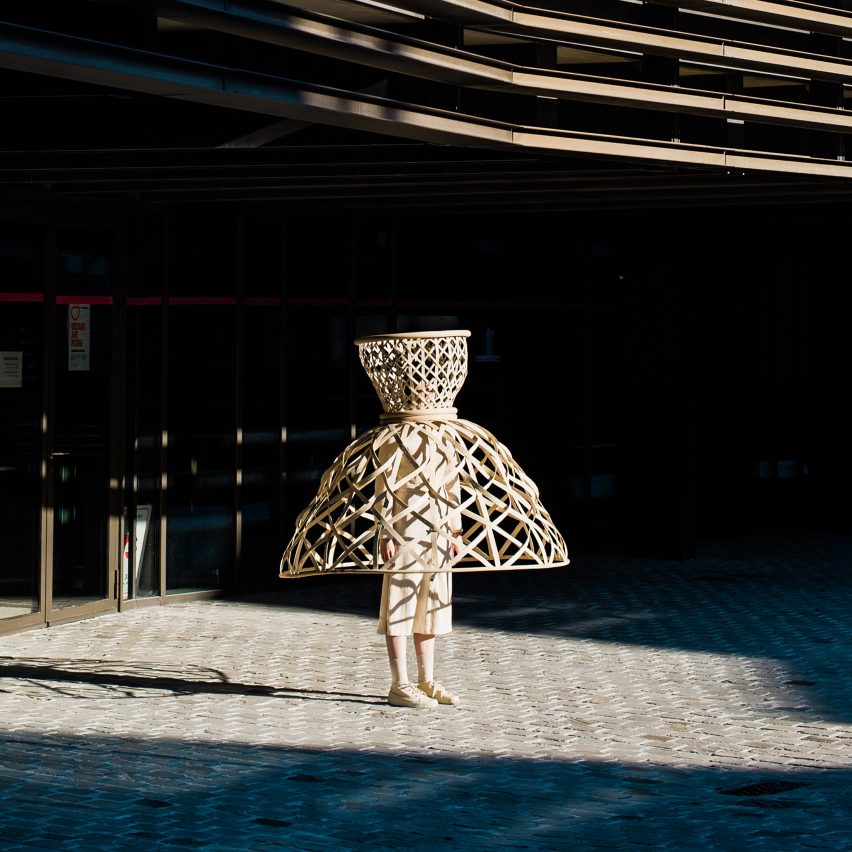
Research and design platform Livable has created a rattan frame that is worn over the head and body to increase awareness of the need for social distancing during the Covid-19 pandemic .
Designed in response to the coronavirus outbreak, the Well-Distance-Being highlights the need for members of the public to keep their distance from each other in order to slow the spread of the virus.
The hourglass-shaped product takes a form similar to crinolines – the stiffened petticoats worn underneath garments in the Victorian era. The cages rest on the user's shoulders, with one section facing upside-down to shield the neck and head and another facing downwards to cover the body.
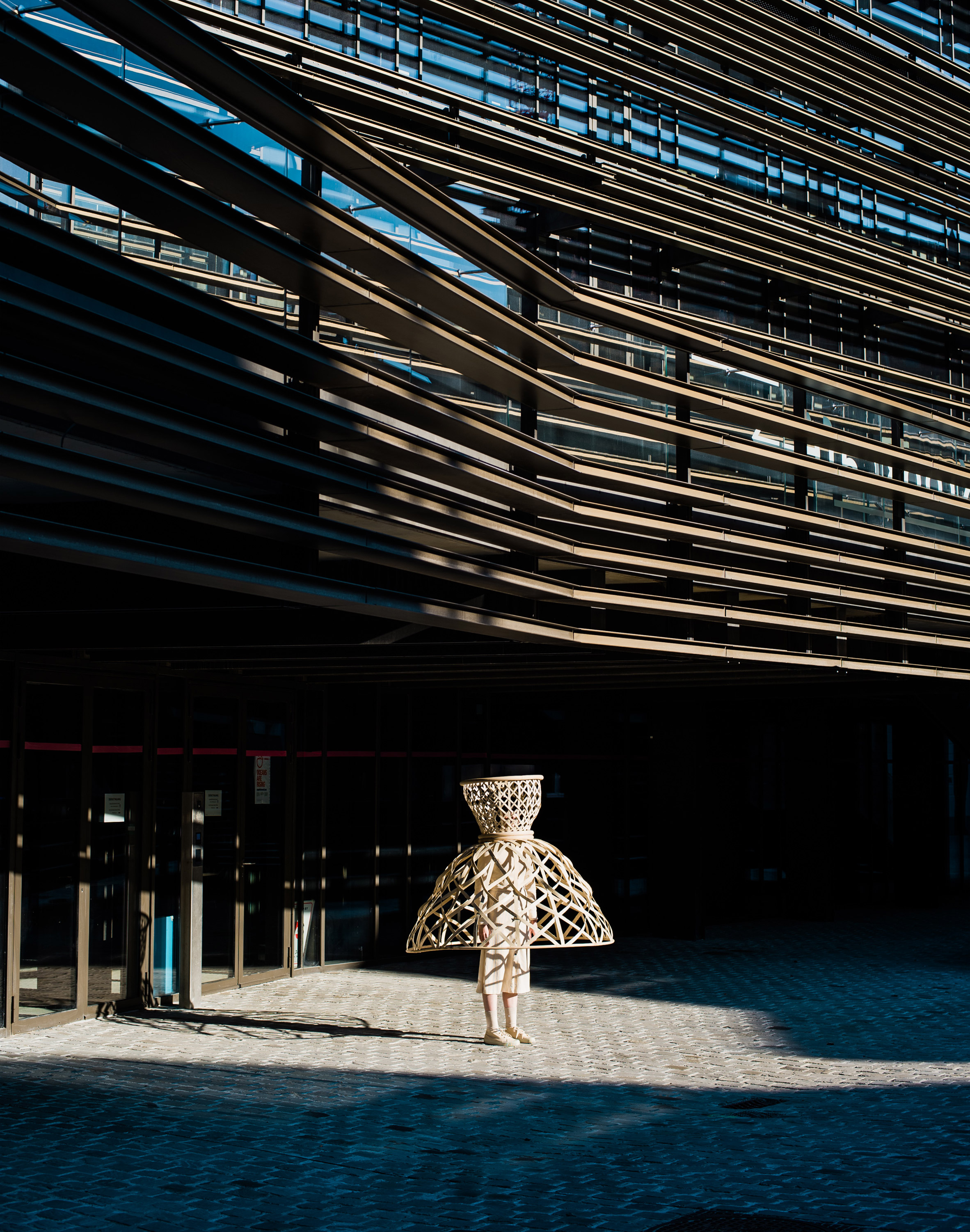
Created for the United Nations' Global Call Out to Creatives initiative, the Well-Distance-Being project aims to communicate a critical public health message about Covid-19 in a creative and understandable way.
This was the brief of the UN's open competition, which called for creatives to design accurate and informative works that could help "flatten the curve" of the coronavirus pandemic.
As Livable founder Sep Verboom told Dezeen, he doesn't propose that members of the public start wearing the rattan structure, which is smaller than the two-metre distance recommended by governments around the world.
Rather it is designed to make people be aware of the need for physical distance.
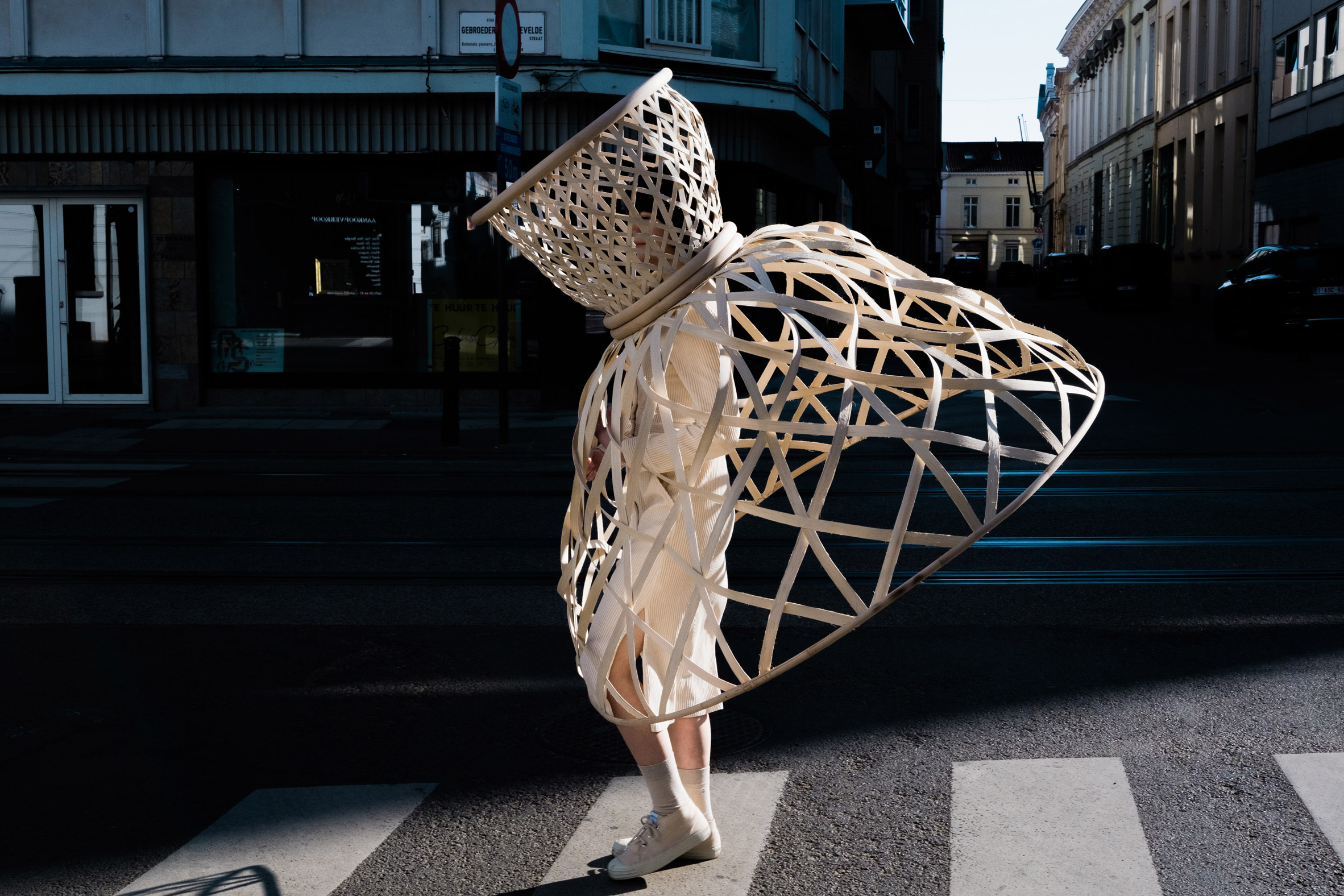
"Physical distance is not being cold or distant; mentally it is about being warm and present for those who need it the most," said Verboom.
"If you do need to get out in the physical world, keep your distance and connect with positive vibrations surrounding you," he continued. "The risk of infecting others is not the way to help."
"We are communicating a critical health message in return for a smile in times where the importance of a healthy mind is more important then ever," the designer added.
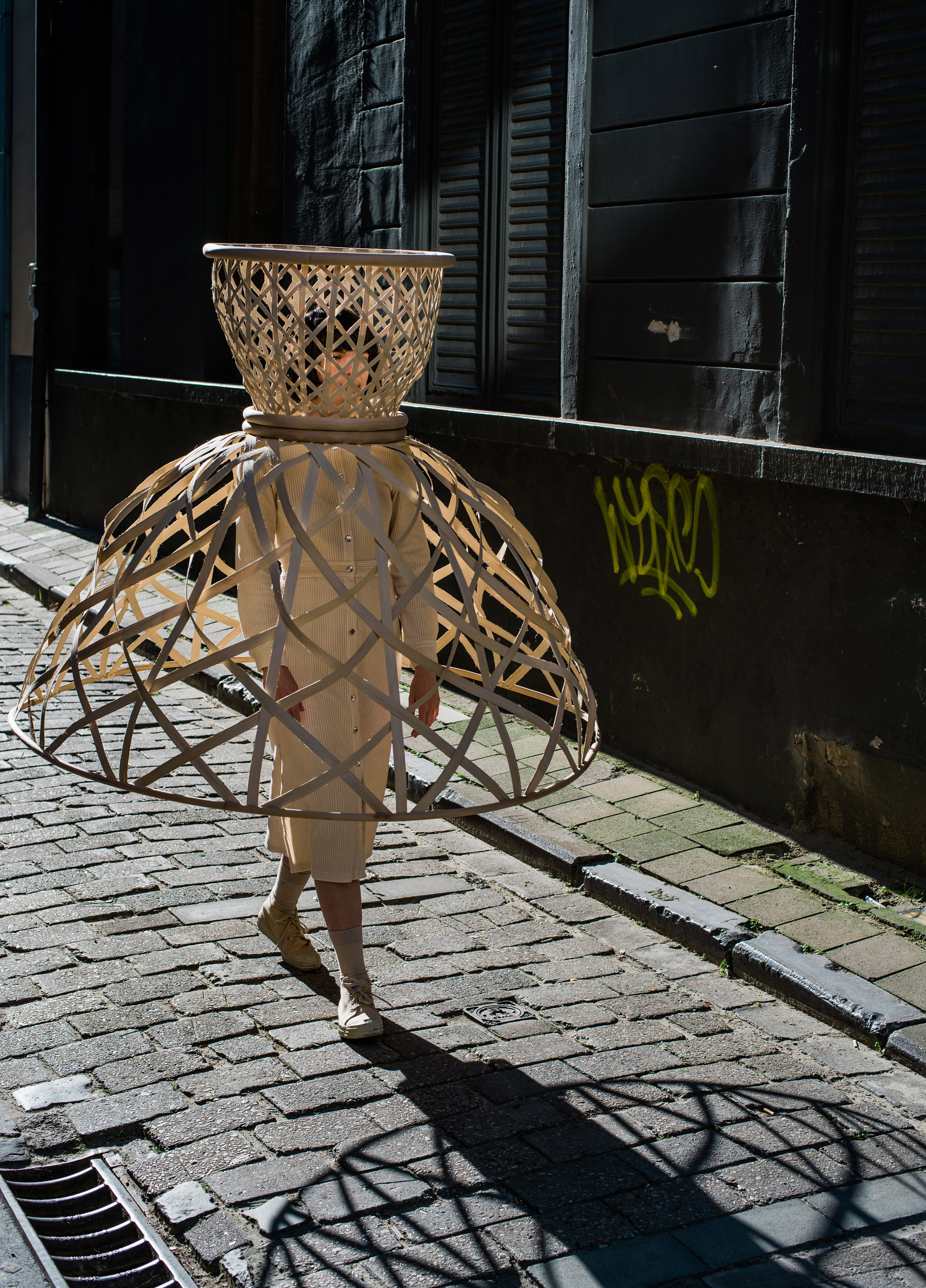
Verboom chose to make the wearable from rattan, as a sustainable alternative to timber, using pieces of the natural material left lying around his studio.
With the help of his partner Florentien Pletinckx, Verboom wove strips of rattan together to create the crosshatch pattern that makes up the main body of the cages. The two frames were then secured together using larger rattan poles that were bent into their circular shape using a blow-torch.
As the designer explained, the intention was to create an "intervention" where you feel physically isolated but are still visually connected.
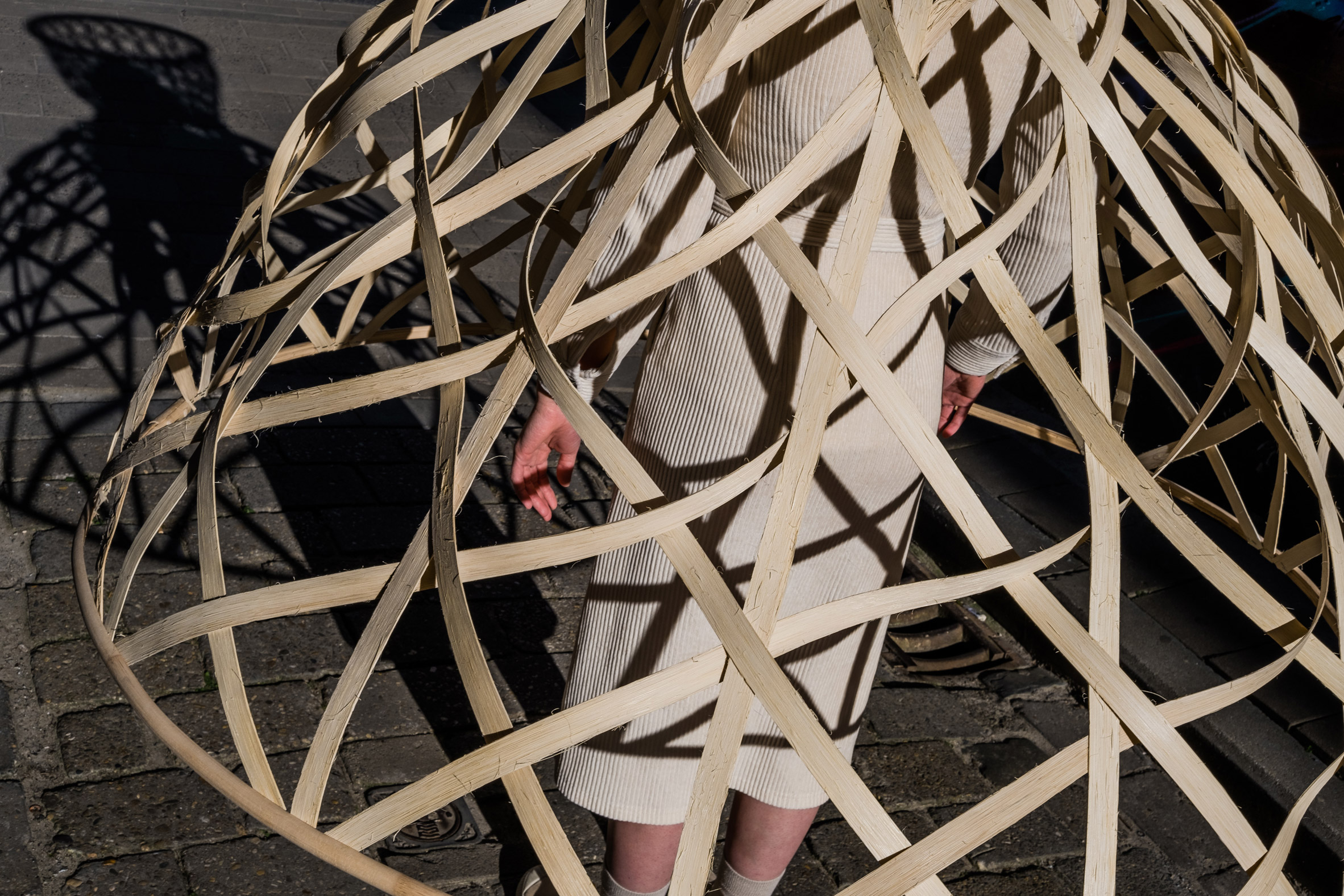
"It is a symbolic intervention originally created to attract peoples attention for good intentions," said Verboom when asked if he worried about the design being seen as satirical.
"If you do nothing, you can do nothing wrong," he continued. "Regardless of our background, we all have the power to change or to be a small part into that change."
"We believe Well-Distance-Being can contribute to different communities where the classic prevention messages have become repetitive and no longer reach the objective," Verboom added. "Create for a cause, not applause."
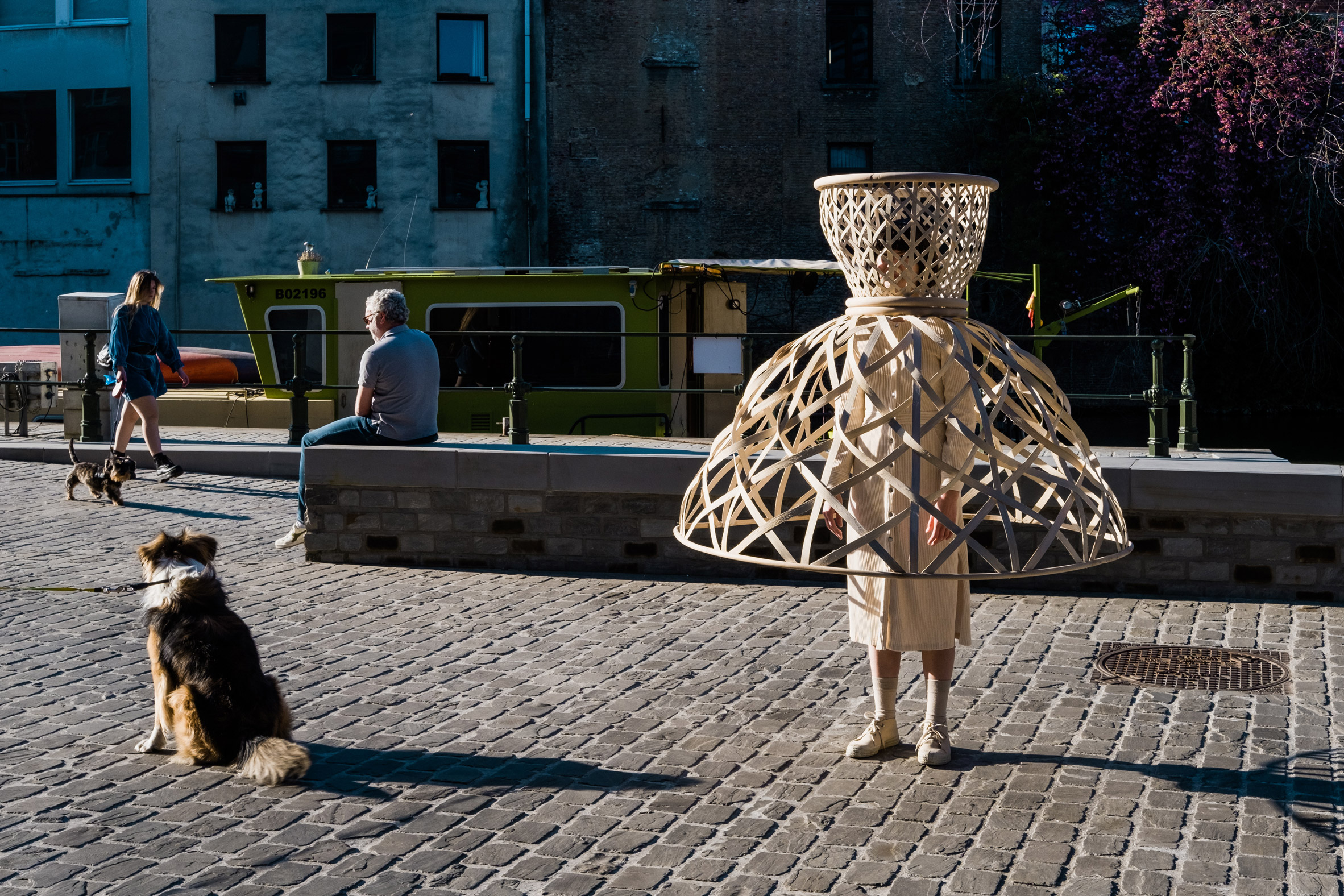
Chinese designer Kiran Zhu has proposed a more discreet way of maintaining good public health habits in light of the coronavirus pandemic.
His compact sanitation kit, called the Handy Capsule, contains four types of health supplies: a disposable mask, hand sanitiser, temperature stickers and alcohol wipes. The kit's capsule-like design takes cues from fashion or cosmetic products, in a bid to make the product easier to integrate into everyday life.
Photography is by Karen Eloot and Pieter Vanoverberghe.
The post Livable's Well-Distance-Being project encourages social distancing with wearable rattan cages appeared first on Dezeen.
from Dezeen https://ift.tt/3cFeaAs
No comments:
Post a Comment